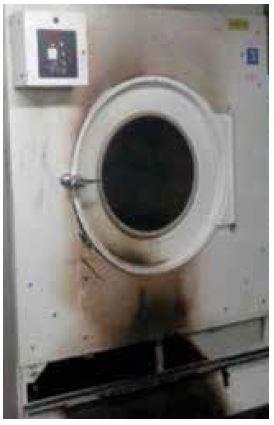201619 Dryer fries instead of dries
Edited from US Coast Guard (USCG) Safety Alert 11-15
A small fire developed in a dryer onboard a cruise ship. The fire was quickly extinguished by the vessel’s crew and caused no significant damage. Investigators suspect that a minor spark occurred due to a loose or disconnected wire, igniting lint in the spaces under the dryer and then the rags in the dryer drum. Subsequently, it was discovered that a built-in fire suppression system, a component of the dryer designed to spray water into the drum in case of fire, had been disabled on all six of the vessel’s installed dryers.
The investigation found, among other things:
- The processes and procedures related to the fire suppression systems were not included in the vessel’s maintenance systems.
- Regular inspections and evaluations of this fire suppression equipment did not occur.
- The shared responsibility for inspection and maintenance of the laundry equipment by two sub-departments (galley service technicians and the electrical department) was ambiguous.
- Laundry systems and the normal production of dryer lint create significant fire hazards due to the flammability of the lint.
- Various sources indicate that the majority of dryer fires are caused by spontaneous combustion of residual soils, paint, edible oils, etc. Furthermore, they are also caused by human error or negligence such as leaving dried materials unattended in the dryer; not properly washing, rinsing and extracting clothes; not cooling down dryer loads for ten minutes at ambient temperatures; improper cleaning lint traps; and damaged lint traps.
Lessons learned
- Always keep ‘safety components’ such as automatic temperature controls, timing devices, cool down cycles and fire sensing/ smothering devices in top operating condition.
- It may be a good idea to re-evaluate the risks associated with industrial washing and drying equipment on board your vessel.
- Establish clear lines of responsibility for equipment inspections, maintenance and repair.
- Never override safety components.
- Consider the need for additional signage and instructions in the working languages of the ship.

